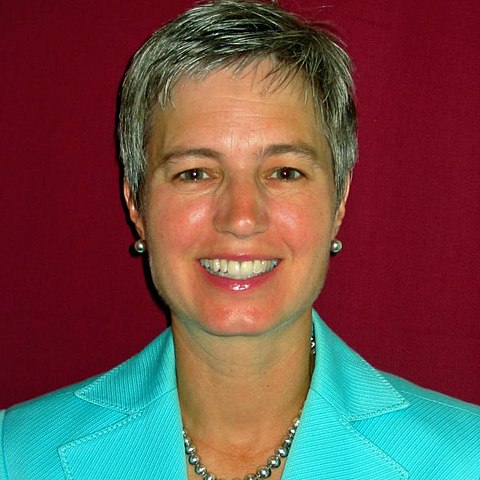Cathy Gabor, an Associate Professor in the Department of Rhetoric and Language at the University of San Francisco (USF), has her students edit Wikipedia entries in her Rhetoric 295 class. In 2017, she won the Innovation in Teaching with Technology Award at USF.
I regularly teach a Transfer Year Seminar (TYS), which is just like a First Year Seminar, but the students are all transfer students to the University of San Francisco (USF). Regardless of how many writing classes transfer students have taken at previous institutions, USF requires students to take one writing class at our institution in order to fully understand the writing traditions and expectations of our university. The TYS classes are taught on specialty topics, picked by the professors. My class is called NewMedia/YouMedia: Writing in Electronic Environments (Rhetoric 295). I designed my class around this topic in hopes that it would not feel like any writing class the students had previously taken.

File:Cathy Gabor.jpg, by Cathygaborusf, CC BY-SA 4.0, via Wikimedia Commons.
In my TYS class, I ask students to develop research questions, engage in the successes and frustrations of the research process, and produce researched writing. In previous semesters, students wrote “term papers” which ended up in my bottom drawer: great work exposed only to an audience of one (me). In order to give the students a public platform and wider audience for their work, I redesigned the research paper project: now my students create or significantly edit Wikipedia articles.
Most students do find the class very different from previous required writing classes and most students identify the Wikipedia editing project as both fun and challenging at the same time. Anjelica’s reflective comment is fairly representative: “The Wikipedia assignment was the most interesting and was where I’ve done the most extensive research I have ever done. This taught me how to discuss with others, find valid sources, and write in a neutral tone which was a great challenge.”
The Wikipedia editing project fulfills several key learning goals. First, students work in groups, and, therefore, learn how to think about collaborative work metacognitively. They assess their group members’ individual and collective strengths; they decide when to split up the tasks at hand and when co-authoring will work better; and, they learn how to navigate disagreement within the group about the direction of the research. This small group navigation prepares the students to negotiate in real time with other Wikipedians who are editing and contributing to the same article. And, of course, the recursive process of researching-writing-rewriting-re-researching helps students conceive of how knowledge is actually made for academic and public audiences.
Before each semester starts, I identify terms related to rhetoric and digital writing that are underdeveloped in Wikipedia. Then, I narrow down the list and present my students with four choices of Wikipedia terms. They form four groups and start researching and editing. They have worked on entries from Produsage to Fake News. Once in a while, I will come up with a term that does not have a Wikipedia page but needs one. For example, I noticed that there was no page for a cornerstone concept of Jesuit rhetoric: Eloquentia Perfecta. I worked with the Wiki Education Liaison to create a shell for this entry, and my students produced the first-ever Wikipedia page on Eloquentia Perfecta.
One student, a marketing major named Chelsey Eckhardt, worked on that new Eloquentia Perfecta entry. When she signed up for that group, she said aloud to me and her classmates, “I hope I don’t regret choosing this entry.” By the end of the project, Chelsey realized that both Wikipedia and the principles of Eloquentia Perfecta had become “integrated into her life,” including her part-time job and her other classes. Chelsey explains the impact in this short video:
Faculty across the disciplines could easily employ a Wikipedia editing project because Wikipedia supports entries in every field. Such a project could precede, follow, or replace a traditional term paper. In other words, students might begin their research in a group format and contribute to a Wikipedia entry and then produce an individually-authored paper based on the research already done. Likewise, students could write their own term papers first and then collaborate with classmates to edit a Wikipedia entry related to their term paper subject. Either of these models would give students (and faculty) a platform for comparing how evidence gets presented for academic versus public audiences. Finally, faculty may decide, as I did, that students have had and will have plenty of traditional research assignments and use a Wikipedia-authoring project to engender student enthusiasm for taking writing and research beyond the classroom.
Image: File:University Center – University of San Francisco – San Francisco, CA – DSC02659.JPG, by Daderot, Public Domain Dedication, via Wikimedia Commons.
